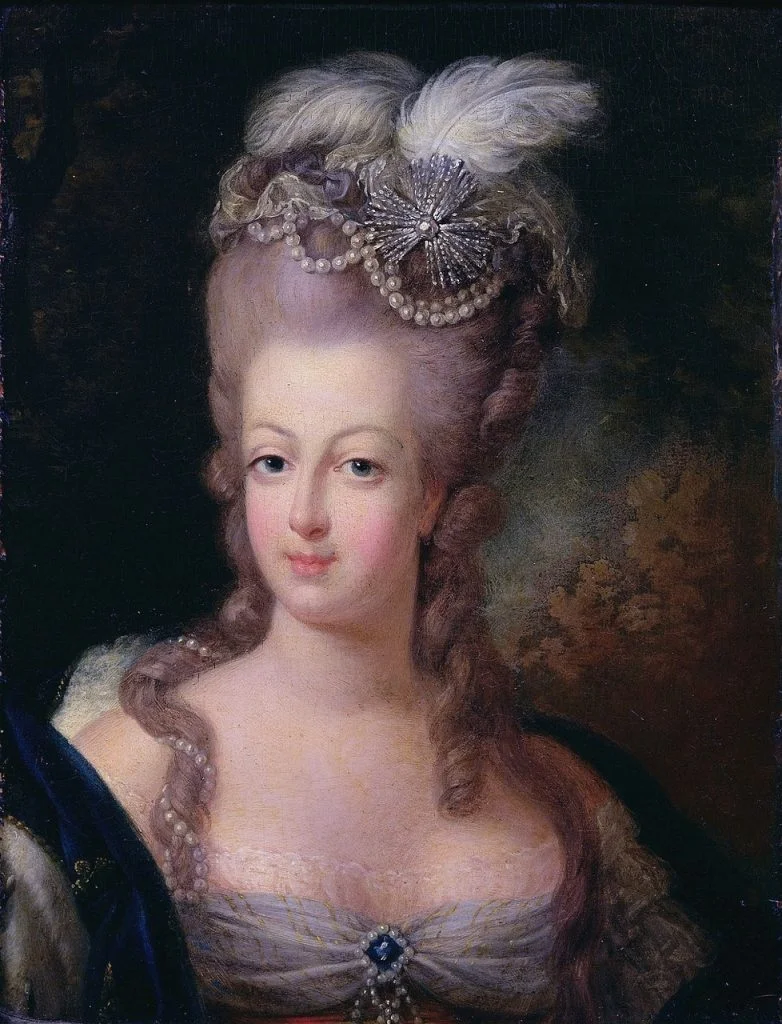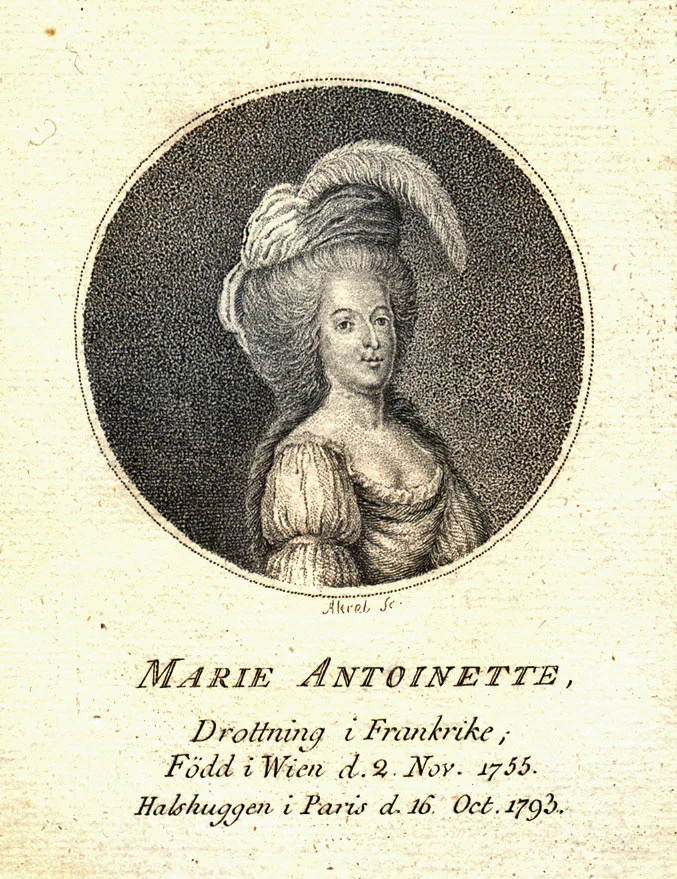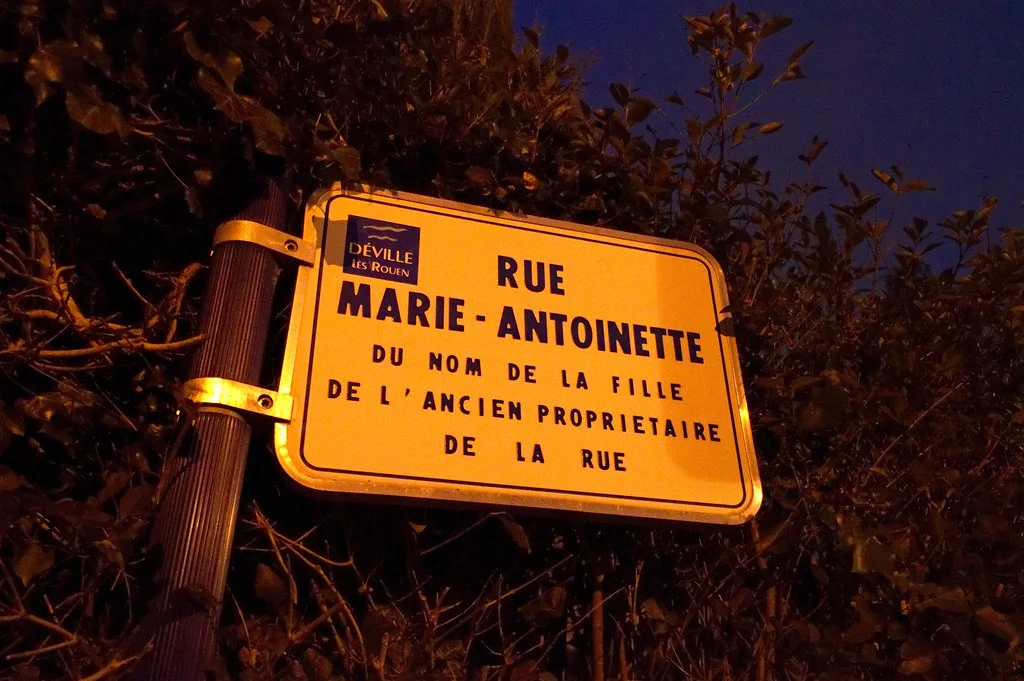Let’s talk about Marie Antoinette, or, as I like to call her, the Queen of Confectionary Misunderstandings. My fascination with her began the same way my diet ended – with cake. Did she really say, ‘Let them eat cake’?
Well, between you and me, my extensive, almost obsessive, midnight snacking (strictly for historical research, of course) on petit fours and pain au chocolat has led me to some delicious discoveries about her life. Are you ready to bite into these tantalizing tales?
Marie Antoinette was a true daughter of the Caesars, unwittingly sowing the seeds of her own destruction.
Evelyne Lever
Marie Antoinette Facts
Before we dive into the intriguing facts about Marie Antoinette, remember, there’s a quiz at the bottom of this article, testing how well you’ve retained this royal tale.
- At just 14 years old, she left Austria to marry the future king of France, making a political alliance that was meant to consolidate power between the two nations.
- She was known for her extravagant lifestyle, which included the construction of the Petit Trianon, a private retreat for herself within the grounds of Versailles, symbolizing her desire for privacy.
- Her marriage initially remained unconsummated for seven years, a fact that sparked much public speculation and concern.
- Despite her image as a spender, she was a patron of arts and significantly contributed to the enhancement of French fashion and culture.
- The Queen’s Necklace scandal, where she was falsely accused of purchasing an expensive diamond necklace, greatly tarnished her reputation and increased public resentment.
- She never actually said “Let them eat cake” when told that the French peasantry had no bread. This quote was attributed to her by opponents to fuel outrage against her.
- During her reign, she introduced the concept of haute couture in French fashion, often wearing elaborate and trend-setting hairstyles and gowns.
- She gave birth to four children, but only one, Marie Thérèse, survived to adulthood, reflecting the high infant mortality rate of the time.
- Her passion for gambling was well-known, often spending long nights playing card games, which led to substantial debts.
- In an effort to improve France’s agricultural techniques, she established a model farm at the Petit Trianon, where she kept different breeds of animals.
- Despite being seen as a symbol of the monarchy’s extravagance, she was personally involved in charitable works, providing for the poor and supporting the education of young girls.
- Her trial before the Revolutionary Tribunal was filled with baseless accusations, including incest and treason, showcasing the extent of public animosity towards her.
- She was executed by guillotine on October 16, 1793, wearing a simple white dress, symbolizing innocence, yet was treated with utter disrespect by the crowd.

- Her last words were an apology to her executioner, after accidentally stepping on his foot, showing her grace until the end.
- The diamond necklace involved in the scandal that besmirched her reputation was valued at an astronomical sum, equivalent to millions of dollars today, and it was never recovered.
- Her influence on fashion included popularizing the muslin dress, a simpler style that contrasted with the elaborate court dresses of the time.
- She often sought solace in the company of her children and close friends at her private estate, away from the intrigues of the court.
- The hairstyle “pouf” became iconic under her influence, sometimes featuring elaborate decorations, including ships in full sail, showcasing her creative influence on fashion.
- Her pet dog, Thisbe, remained beside her until her arrest, symbolizing the loyal companionship she valued.
- The gardens of Versailles were redesigned at her behest, incorporating more intimate spaces that reflected her taste for the English garden style, contrary to the formal French garden design.
- She was known to have a sweet tooth, with a particular fondness for macarons, which have since become a symbol of French pastry.
- Her hairstyle, created by her hairdresser Léonard Autié, could reach extraordinary heights and was often imitated by women of the court, leading to a craze that defined an era.
- After her death, her children were separated from each other and treated with great cruelty, with her son, Louis-Charles, dying under suspicious circumstances while in captivity.
- Marie Antoinette’s body was initially buried in an unmarked grave, but her remains were exhumed and transferred to the Basilica of Saint-Denis in 1815, after the Bourbon Restoration.
- She played a significant role in promoting the manufacture of Sèvres porcelain, one of the most famous porcelain manufacturers, which became synonymous with luxury and refinement.
- Her initial reluctance to adopt French customs and her continued use of the German language in private caused distrust among the French populace.
- The infamous Affair of the Diamond Necklace not only damaged her reputation but also exacerbated the financial crisis facing France, indirectly contributing to the Revolution.
- Marie Antoinette and Louis XVI’s decision to attempt an escape from France, known as the Flight to Varennes, ended in failure, further eroding royal credibility and sealing their fate.

- Her interest in botany led to the introduction of new plant species to France, showcasing her influence on the botanical gardens of Versailles.
- The queen’s personal opera house at Versailles was a testament to her love of music and the arts, often hosting private performances for her circle.
- Marie Antoinette’s correspondence with her mother, Empress Maria Theresa of Austria, reveals a complex relationship filled with advice and rebukes on her conduct and the French court’s politics.
- She was a key figure in the development of the Rococo style in France, which is characterized by ornate decoration, light colors, and asymmetrical designs.
- Her friendship with Princess de Lamballe and the Duchess of Polignac was highly publicized, leading to rumors and scandalous gossip about the nature of their relationships.
- The queen’s efforts to reform the French fashion industry were not purely for vanity but also aimed at boosting the domestic textile industry and reducing imports.
- Marie Antoinette’s adoption of simpler dress styles later in her reign was part of a broader shift towards neoclassicism, reflecting changes in societal values and tastes.
- Her patronage extended beyond fashion and the arts to include scientific endeavors, such as supporting the work of the Montgolfier brothers in ballooning, marking the first manned flight.
- The Petit Trianon and its surroundings were designed to mimic a rustic village, a stark contrast to the opulence of Versailles, reflecting her desire for a simpler life.
- Despite popular belief, Marie Antoinette was politically astute and involved in court politics, often pushing for policies that would strengthen the monarchy.
- Her execution marked the first time a French queen was publicly executed, a profound moment that symbolized the radical shift in French society and governance.

- Marie Antoinette’s image has been extensively rehabilitated in modern times, with historians highlighting her as a victim of circumstance and public misinformation.
- She was known to have a secret correspondence with foreign dignitaries, including Axel von Fersen, who was rumored to be her lover and played a key role in planning her failed escape.
- The construction of the Hameau de la Reine, a rustic retreat featuring a faux peasant village, was indicative of her idealized view of countryside life, far removed from her reality.
- Her impact on French culture and society extended beyond her death, influencing fashion, arts, and even political discourse in subsequent generations.
- Marie Antoinette’s trial and execution were expedited, with charges that were largely unsubstantiated, reflecting the tumultuous and often unjust nature of the Revolution.
- Her name and image have become emblematic of the dangers of detachment from societal realities and the volatility of public opinion.
- Marie Antoinette’s personal library contained over 5,000 books, indicating her wide-ranging intellectual interests and love of reading.
- The queen’s spending habits and lavish lifestyle were often exaggerated by her detractors to incite anger against the monarchy.
- Her presence at Versailles significantly influenced the court’s etiquette, including the introduction of more intimate gatherings that broke with traditional formalities.
- The legacy of Marie Antoinette is a testament to the complexity of historical figures, embodying both excess and tragedy, and continues to fascinate scholars and the public alike.
- Despite the controversies surrounding her life, Marie Antoinette’s influence on the decorative arts endures, with motifs and styles from her era still celebrated in design and fashion circles today.
Marie Antoinette Myths

Having journeyed through Marie Antoinette’s life, let’s now unravel the myths that often overshadow the truths of her intriguing story.
- “Let Them Eat Cake”
There is no evidence that Marie Antoinette ever said “Let them eat cake” when told that the French peasants had no bread. Rousseau likely popularized this quote in his autobiography, years before the French Revolution, attributing it to “a great princess,” not specifically Marie Antoinette. - She Was Extravagantly Wasteful
While Marie Antoinette did spend lavishly, it was not to the extent often portrayed. Her spending somewhat typified that of a queen of her era, and people often made her a scapegoat for France’s financial problems, which long-standing economic policies largely caused. - Marie Antoinette Was Detached from the French People
Though she lived a life of luxury, Marie Antoinette did show awareness and concern for the plight of the poor, especially later in her reign. She participated in various charitable endeavors and, during the famine, she cut back on royal expenses to help fund relief efforts. - She Was Unpopular from the Start
Initially, Marie Antoinette was quite popular in France. Her charm and youth appealed to the public. The shift in public opinion occurred over the years, fueled by political circumstances, propaganda, and her perceived lifestyle. - Her Trial and Execution Were Justified
The highly politicized trial of Marie Antoinette lacked substantive evidence. The revolutionary government exaggerated or fabricated many accusations to place blame for the country’s problems. Her execution was more about symbolizing the end of the monarchy than actual justice.
No products found.
Marie Antoinette Quotes

Here is a small list of all my favorite quotes about Marie Antoinette. These are my personal favorites, and I will be happy to hear yours in the comments.
Let them eat cake.
Marie Antoinette?
People often attribute this infamous quote to Marie Antoinette, though no historical evidence confirms she actually said it. It symbolizes her perceived indifference to the plight of the poor during the French Revolution.
The Queen’s death must be dated from the Diamond Necklace Trial.
Thomas Carlyle
Thomas Carlyle refers to the scandal known as the Affair of the Diamond Necklace, which irreparably tarnished Marie Antoinette’s reputation and marked the beginning of her downfall.
There is nothing new except what has been forgotten.
Marie Antoinette?
This quote, often attributed to Marie Antoinette, reflects on the cyclical nature of history and the tendency to repeat past mistakes.
Marie Antoinette was a woman of generosity and humaneness.
Stefan Zweig
Stefan Zweig’s quote reflects a more sympathetic view of Marie Antoinette, highlighting her positive qualities amid the controversy that surrounded her life.
She was more sinned against than sinning.
Lady Antonia Fraser
This quote by Lady Antonia Fraser suggests that Marie Antoinette was more a victim of her circumstances and the public’s perception than a perpetrator of wrongdoing.
Marie Antoinette FAQ

From the depths of history, we’ve resurfaced with quotes for Marie Antoinette. Now, let’s turn our attention to the frequently asked questions. Be thorough, as the quiz is waiting and will test your grasp of the facts!
- Who was Marie Antoinette?
Marie Antoinette was the last Queen of France, married to Louis XVI. Her lavish lifestyle made her a symbol of the French monarchy’s excesses, contributing to the unrest that led to the French Revolution. - How old was Marie Antoinette when she died?
She was 37 years old when executed by guillotine on October 16, 1793, during the French Revolution. - Why was Marie Antoinette executed?
The French authorities executed Marie Antoinette for treason, accusing her of exacerbating France’s financial crisis and conspiring against the nation during the Revolution. - What were Marie Antoinette’s last words?
Her last words were an apology to her executioner for accidentally stepping on his foot, demonstrating her composure in her final moments. - Is Marie Antoinette syndrome real?
Marie Antoinette syndrome, where hair turns white suddenly, is a real but rare condition possibly linked to autoimmune disorders. There’s no scientific proof that Marie Antoinette’s hair turned white overnight before her execution.
No products found.
Marie Antoinette Trivia

It’s quiz time, but be warned: if you fail to answer correctly, we will crown you the Jester of Versailles in a comical coronation!
Conclusion
Ah, Marie Antoinette – a queen who loved her luxuries as much as any modern influencer loves Instagram. Sure, her choices were a tad extravagant (diamond necklaces and fancy hairdos anyone?), but who can blame her for wanting a little sparkle in her life? Maybe if she had a budgeting app, history would tell a different story.
Here’s a thought: If you were queen for a day, would you indulge in the extravagance or opt for a more down-to-earth approach? Let’s chat about your day in royal robes in the comments!
4 Sources Used For This ArticleMarie Antoinette – World history
Marie Antoinette – Biorgaphy
Best Marie Antoinette Quotes – Bookey


